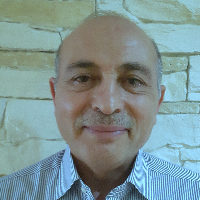Investigation of autofrettage process in Al 1050 specimens by finite element and experimental method
Author(s):
Article Type:
Research/Original Article (دارای رتبه معتبر)
Abstract:
Autofrettage process can be used to introduce beneficial residual stress in the cylinder of thick-walled pressure vessels. In this study, an experimental autofrettage was assembled based on hydraulic performance, and then aluminum alloy (Al1050) specimens were subjected to autofrettage under different pressures. Also, to evaluate the behavior of the specimens under the autofrettage process, the specimens were modeled into the finite element software ABAQUS and for evaluation of the accuracy of the data obtained from the finite element method (FEM), a strain gauge mounted tangentially on the outer surface of the specimen was used. It was also observed that by applying optimal autofrettage percentage, the maximum of Von-Mises stresses in specimens can be reduced by about 27%. Although in the non-autofrettaged specimens, the maximum stresses occur in the inner wall of the specimen, but by applying the autofrettage process, in addition to reducing the maximum amount of these stresses, the maximum amount can be transferred to the outer wall, which it is very important because the majority of fatigue cracks are formed in the inner wall of specimens.
Keywords:
Language:
Persian
Published:
Journal of Mechanical Engineering, Volume:51 Issue: 3, 2021
Pages:
109 to 117
https://magiran.com/p2259069
سامانه نویسندگان
مقالات دیگری از این نویسنده (گان)
-
Numerical and Experimental Investigations on Fatigue Behavior of Carbon/Epoxy Laminates Toughened by Nanofibers
Milad Saeedifar, Hamed Saghafi, Hesam Saghafi, *
Amirkabir Journal Mechanical Engineering, -
Evaluation of damage of filament wound composite tubes under lateral loading by acoustic emission method and finite element simulation
Amir Bani Mohammad Ali, , *
Modares Mechanical Engineering, -
Investigation of Failure Mechanism of the Composite Tubes Made by Filament Winding Process by Acoustic Emission Method
, *, Amir Bani Mohmmad Ali
Amirkabir Journal Mechanical Engineering,


